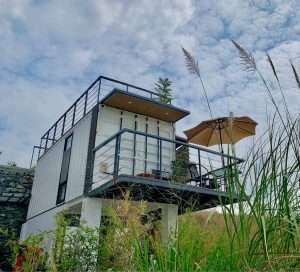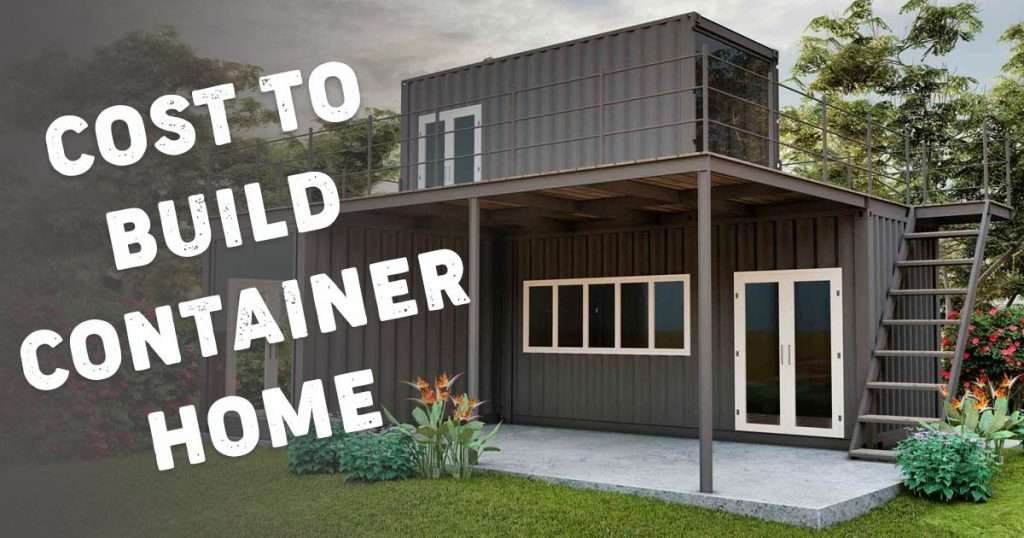In recent years, small homes have become very popular among homeowners and minimalists. These tiny living spaces are simple and efficient, making them perfect for people who want to downsize and declutter. One big advantage of small homes is that they are cheaper to build and maintain. A study by the Journal of Industrial Ecology found that smaller homes cost less to heat, cool, and furnish. Because they save money and are eco-friendly, many people are now looking into container homes as a great housing option.
What are container homes?
Container homes are houses made from used shipping containers. These containers are built from strong steel and are designed to last through tough conditions while carrying goods around the world. A container home usually keeps its industrial look with a modern, simple design that often includes large windows and open spaces.
One of the cool things about container homes is how flexible they are. You can stack them, place them side-by-side, or arrange them in different ways to create various sizes and styles of homes. This makes for quick and creative building options.
People choose container homes for several reasons:
- Strong and Durable: Shipping containers are very sturdy and can handle bad weather.
- Eco-Friendly: Reusing containers helps save traditional building materials.
- Quick to Build: Prefab container homes go up faster than regular houses.
- Cheaper: They usually cost less to build and take care of compared to traditional homes.
Container homes are a smart, green, and budget-friendly option for those looking for something unique.

Is It Really Cheaper to Invest in a Container Home?
You might be wondering if container homes are really cheaper. Several factors help make them more affordable:
- Material Costs: Used shipping containers are generally cheaper compared to traditional building materials.
- Quick Construction: Building with containers is faster, which can reduce labor costs.
- Less Material Waste: Since the main structure is already made, there’s usually less waste.
However, let’s look at how much it costs to get a fully furnished container home, depending on its size:
| Size | Square Feet | Average Cost |
| Home Office | 80 – 100 | $10,000 – $20,000 |
| Studio | 160 | $15,000 – $25,000 |
| 1 Bed 1 Bath | 320 | $25,000 – $82,000 |
| 2 Bed 2 Bath | 960 | $100,000 – $180,000 |
| 3 Bed 2.5 Bath | 1600 | $180,000 – $250,000+ |
These costs might surprise you because container homes are known for being cheaper. While the savings on materials and construction are real, making the home fully livable adds to the price. This includes things like insulation, plumbing, electrical work, and interior finishing.
Even though the overall cost can add up, container homes still offer good value. They provide a quick, eco-friendly housing option that can be more affordable than traditional homes in many ways.
Factors Affecting the Cost of Container Homes
Building a container home involves several costs to make it fully functional and livable. Here’s a list of what you need to pay for:
- Foundation: You need a solid base, costing between $3,000 and $19,350 depending on the type (like concrete slab or piers).
- Roofing: Protect your home from weather with roofing, which costs $3 to $6 per square foot.
- Insulation: Keep your home comfortable with insulation, which costs $0.80 to $4.50 per square foot.
- Electrical Wiring: Installing lights, outlets, and appliance connections can cost between $1,600 to $7,800.
- Plumbing: Set up water systems for sinks, toilets, and showers, costing $450 to $1,800 per fixture.
- Interior Finishing: Includes framing, drywall, painting, and flooring. The cost depends on your material choices.
- Windows and Doors: Quality windows and doors improve security and comfort. Prices vary based on size and type.
- Heating and Cooling Systems: Essential for comfort, with costs depending on the system’s type and efficiency.
- Utilities Connection: Hooking up to water, sewer, and electric lines varies by location and complexity.
- Permits and Zoning: You’ll need permits and inspections, ranging from $500 to $2,000, depending on local rules.
- Labor Costs: Paying for contractors, electricians, plumbers, and other workers adds to the expense.
- Exterior Finishing: This includes painting or siding to protect and beautify your home’s exterior.
- Appliances and Fixtures: Necessary items like refrigerators, stoves, washers, dryers, sinks, and bathtubs add to the cost.
Considering these factors will give you a better idea of the total investment needed for a comfortable and livable container home. While container homes can be cheaper at first, these additional expenses are important to make them a good place to live.
Long-Term Cost Effectiveness of Container Homes
In the long run, container homes can save you money because they cost less to maintain. The strong steel structure of shipping containers is very durable and doesn’t get damaged as easily as traditional building materials. This means you’ll spend less on repairs and replacements over time.
Container homes also need less upkeep for things like roofing and siding, which helps reduce ongoing costs. Plus, they’re resistant to pests and mold, so you won’t have to worry about those problems.
If you invest in good insulation and efficient heating and cooling systems, you’ll also save on energy bills. All these factors make container homes a smart choice for those wanting to keep long-term housing costs low while enjoying a unique and sustainable living space.

